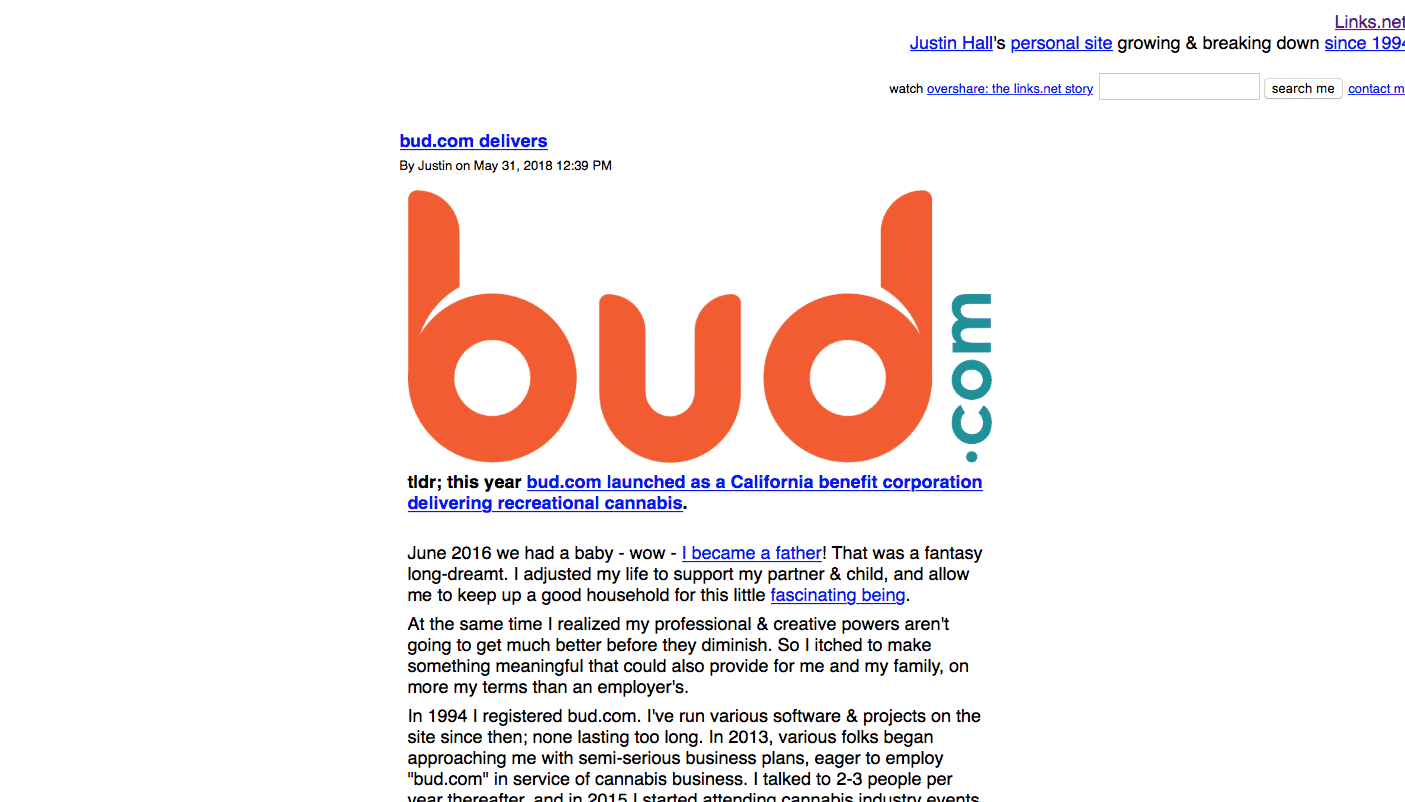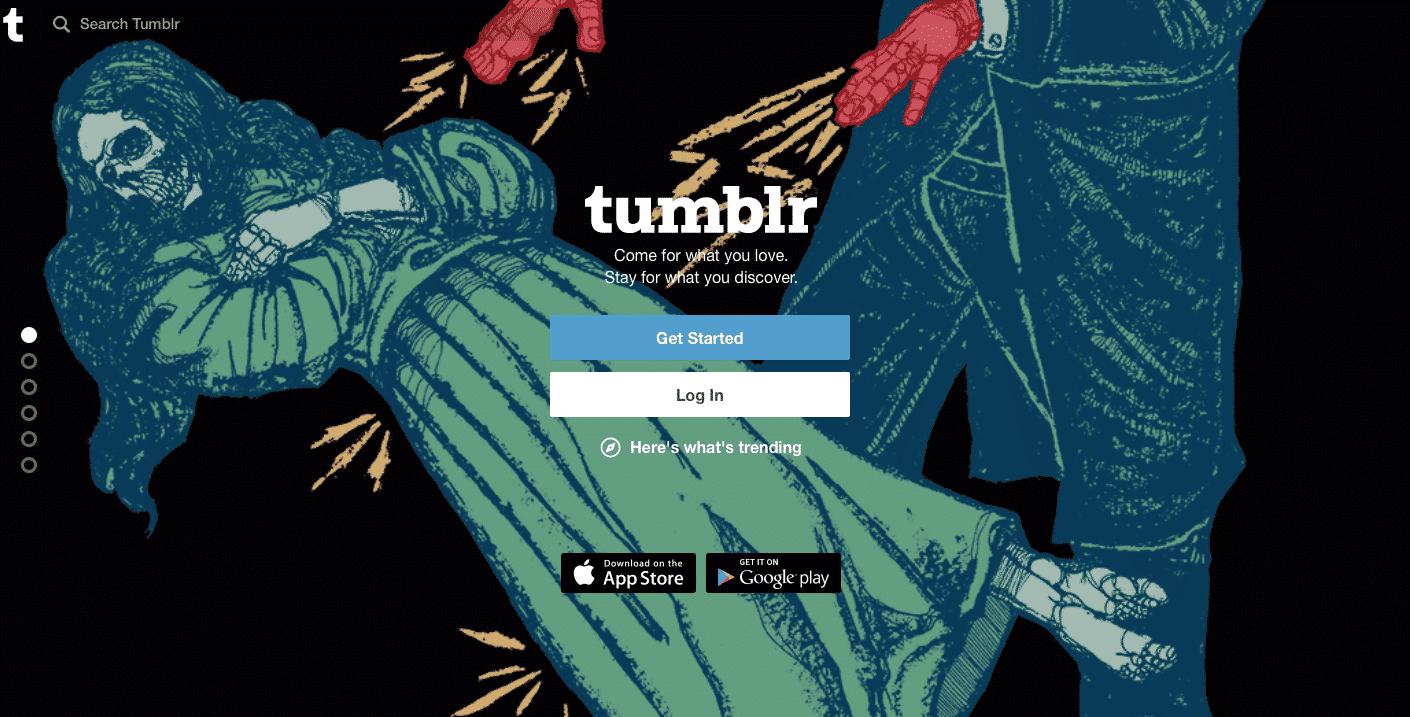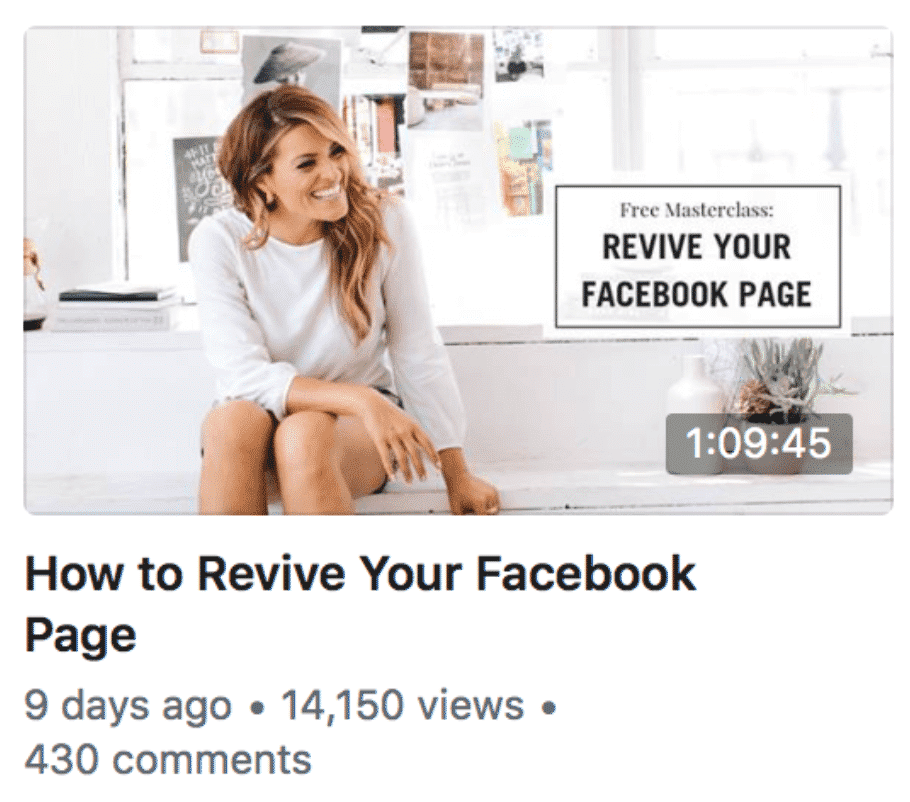Blogging: Is It Worth It? Is It Dead?
by Cydney Hatch • December 3, 2018
Have you questioned if blogging is relevant anymore? Is it worth it? Is it dead?
If so, you’re not alone!
Businesses alike all question if blogging is still a viable business and growth strategy but let me tell you this: blogging is not dead, it has just evolved.

As in social Darwinism, you either adapt or die and blogging has done just that: adapt. Like most social and marketing strategies, a lot of platforms evolve to meet the needs of people and in this article, we will talk about how and why blogging is still a viable option for business success in today’s fast-paced world.
Blogging is not dead and it will live to see another day…
A Brief History of Blogging
Now before we can talk about where blogging is going, we need to quickly go over where it has been. Blogging have become an integral part of the online world and it’s so much more than the eye rolling “mommy” or “fashion” blogs. Although blogging is a relatively new internet platform, it has an interesting and rich history in how it has become what it is today.
In this section, I will give you a brief history of blogging and how it has evolved into a powerful marketing channel.
The Early Years
According to many, the first blog was Links.net, created by Justin Hall, while he was a Swarthmore College student in 1994. Of course, at that time they weren’t called blogs, they were “personal homepages.”

It wasn’t until 1997 that the term “weblog” was coined by Jorn Barger. He wanted “weblog” to represent the process of “logging the web.” “Weblog” was soon to be shortened to “blog” in 1999 by programmer Peter Merholz.
In 1998, the first use of a blog for news was found on The Charlotte Observer when Jonathan Dube blogged about Hurricane Bonnie. During these early years, blogging platforms like LiveJournal came to be and in 1999, that platform that would later become Blogger was started by Evan Williams and Meg Hourihan at Pyra Labs.
Blogger, as we know it, is largely responsible for bringing blogging into the mainstream internet world!
The Growth Period
The early 2000s was the boom of blogging!
In fact, by the middle of 2006, there were 50 million blogs according to Technorati‘s State of the Blogosphere report! Political blogs were some of the most popular in early blog-dom but we also saw a boom in “in-depth” topic blogs. These types of blogs often delved much deeper into current news and pop culture than mainstream media sources, in addition to commenting directly on what traditional media was reporting.
By 2001, there was enough interest in blogging that some how-to articles and guides started cropping up.
A number of popular blogs got their start in the early 2000s, including Boing Boing, Dooce, Gizmodo, Gawker (the first major gossip blog to launch), Wonkette, and the Huffington Post. Weblogs, Inc. was started by Jason Calacanis in 2003, and was then sold to AOL for $25 million. (This was the sale that helped create a permanent place for blogs in the modern world.)

Another important aspect of blogging launched in 2003: the AdSense advertising platform. This was the first ad network to match ads to the content on a blog and it also was a way that bloggers could start making money from when they first started blogging.
Once bloggers started making money from their blogs, the number of blogs happening skyrocketed! (Hello, influencer marketing).
Blogs Reach the Mainstream
By the mid-2000s, blogs were all over the place and people could not get enough! In January of 2005, a study was released saying that 32 million Americans read blogs (at the time, it was more than 10% of the entire population).
A number of mainstream media sites started their own blogs during the mid to late 2000s, or teamed up with existing blogs to provide additional coverage and commentary.

During this time, the number of blogs grew even more, with more than 152 million blogs active by the end of 2010. Virtually every mainstream news source now has at least one blog, as do many corporations and individuals.
Hello the growth of modern blogging!
The Rise of Tumblogs
A lot of people only think of Twitter when they think of microblogging, but there are other microblog (also called tumblog) platforms that allow for a more traditional type of blogging experience, while also allowing for the social networking features of Twitter.
Tumblr was the first major site to offer this kind of service, starting in 2007. They allow for a variety of different post types, unlike traditional blogging services, which have a one-size-fits-all post format (that allows users to format their posts however they want, including adding multimedia objects).

It also makes it easier for users to reblog the content of others, or to like individual posts (sort of like Facebook’s “like” feature).
So from humble beginnings of “personal homepages” to dynamic sites that not only give people a place to write but to sell, educate and interact, blogs have evolved into new tech beasts based off of information sharing and social media influence.
How Has Blogging Evolved?
Gone are the days when you’d religiously read your favorite bloggers content each week (Ahem, LoveTaza– I still love you).
Back in the day, you knew the days your favorite bloggers would put out fresh content and you could not wait to hear what they were going to share next. Well, blogging as you used to know it has evolved into something different. Why?
As social media became more prevelant in our daily lives, blogging could not keep up! Blogging did not scale as well as social media. Scale these days means social traffic and what once worked for blogging, stopped working. Traditional blogging traffic came from link sharing between bloggers who would feature other bloggers but this traffic does not scale to the same type of traffic numbers social platforms would produce.
Blogging had to adapt or DIE!

Blogging typically is a long conversation and social media does not have the same time for that. Blogging today requires you to be crafty, strategic and all encompassing with your marketing strategies.
So, you might ask “how has blogging kept alive amongst the death of meaningful and time-invested conversations with bloggers?” In this next section we will talk about ways in which blogging is still relevant to many businesses and how you can make the most of it!
How is Blogging Relevant?
So, how has blogging clung to it’s internet life? Well, simply put, blogging still matters because:
- It gives a massive opportunity to explore every tip of long tail search terms.
- It’s is a quick way for people to find answers to specific questions
- It helps build trust and brand recognition
- It helps you develop a brand personality
- It gives you material to use on social
- You can repurpose blogging materials into other marketing content
- It’s is a great way to drive traffic
- Search engines gift you higher rankings
- It encourages inbound links
- It starts conversations in your industry
But if these simple answers still do not hit home, here are some more “meaty” reasons:
Content Lives On
It’s true that the way blogging USED to be has died.

No more linear following of a brand or blogger’s life. Today, blogs are a way to attract and educate new people to a site that would be interesting to them. Connecting with relevant people in your brand or blogger target audience gives them content they care about which will then invite them to dig deeper into your brand, website or blog.
Maybe it’s a hook like “How To’s” or “Learn Tips” that attracted viewers to your blog initially but blogs can be a collection of valuable content that inspires people to visit your brand.
Brands and bloggers alike will have many posts that contain interesting, relevant and educational content that will be perennially useful to people asking questions and wanting to find answers online. As posts are standalone pieces to get people interested in more, blogging is alive and well in the minds of those who seek information online.
It Gives You Topics of Interests
If you are a smart marketer, you always check your numbers. From Google Analytics, website metrics to social traffic, blogging is another way to track your target audience’s interests by looking at what posts are most popular with your readers.
Dig into data, my friend!

Each month, you can look at your top posts and see how you can shape the upcoming blog posts and other content to attract more people to your business pages. You want to continue giving your audience what they want, so look for trends they are most interested in learning about!
Blogging Allows You to Create a Crafted Brand Experience
Once people are on your site, you can craft a brand experience like nowhere else on the internet. By having a blog on your website, you can create a strategic, branded and thoughtful experience with your business.
There is nothing stopping your creativity, voice or experience—you are in complete control of your user experience. There is no algorithm holding you back. Other tactics might get them to your blog or site, but this is where you can take the conversations deeper with your potential customers/visitors.
Blogging and Social Media Can Best Friends
A lot of people feel like these two are at odds with each other but they can honestly be digital best friends.

Social media can uphold and add traffic to the longer content while blogging helps social media attraction solidify into meaningful relationship building.
Algorithms for sure make things difficult but if you have the right goals for both social media and blogging, they will not matter. Together, they can supplement each other for business success like no other!
Generally speaking, blogging is a great way to create educational pieces that can deepen your involvement with potential customers as well as help them gain a trust, respect and love for your brand.
How to Make Blogging Work for You: 2018 and Beyond
If you are new to blogging, need to jump start your already existing blog or just generally want some helpful tips, here are some 2018 tips for successful blogging and how you can use it for years to come.
Video is a Must
These days, the internet is full of instant information (memes, tweets, etc) that people are hesitant to invest any real time into reading—which is why the “old ways” of blogging are dead. You first need to spark attention and therefore interests in learning more.
This is where video can help your blogging efforts.
2018 has been called the year of video marketing because it truly is the most popular form of content these days with, 95% of marketers banking on live video just this year! Video is everywhere, and video is the future. Studies have shown that people retain 58% more information when they are interacting with something both in both an audio and visual format. So, since this is such an impactful and popular piece of content to use, why not use it on your blog?!
Video can easily be integrated into your blogging content. Consider doing small video introductions or main points video to start your blog post like Jasmine Star does:

If you have the bandwidth, you can even make your blog primarily video if you have the staff to make that happen! Video can be beautifully crafted to drive traffic towards longer written blog posts, etc. Video creates the interest many written words cannot these days!
Look for creative ways to use it to your advantage!
Write Keyword Rich and Intriguing Blog Titles
Again, these days it is all about sucking people in and gaining more eyes on your content. For example, when you scroll the internet, how many of us shamefully click on articles like:
“Kid Stars, Where Are They Now?”
“20 Things You Didn’t Know Celebrities Expect”
“Why Jen Left Brad”
“15 Ways To Lose 15 lbs in a Week”
etc… You know the clickbait titles we all get suckered into!

Like these titles, you want to drum up interests with readers to learn more about your brand! You can write wonderful content but if you do not have a keyword rich or meaningful title, you might not get the traffic you want!
Do your research to find keywords in your industry that highly rank, uniquely rank or look for questions many of your target audience need answered.
From there, make a list of blog titles you could use! Make eye-catching, intriguing titles and your blog will grow! Instead of viewing short attention spans as an obstacle, come up with compelling headlines and great introductions that hook readers. It pays off!
Make Your Content Unique and Valuable
Google has tried very hard to ensure that highly ranked blog content is legitimately valuable, unique and informative content for readers. If you’re able to make that work for you, you’re ahead of any of your competitors who are not wanting to put the efforts in.
You simply need to work harder and target your audiences better. Keep it clear, concise, and an informative.
Helpful questions to ask yourself are:
- How are you serving your audience?
- What is the purpose in the content you’re creating?
- How are you educating and helping your target audience understand your business/brand?
- What are you doing to creatively talk about industry topics?
- Are you repurposing content that is helpful?
You don’t just want to create just for the sake of creating. You want to always have a more meaningful reason to educate, inform and connect with your customers! Quality over quantity is truly the key!
Get inside their brains and help answer concerns and questions they have! In simplicity, you want your posts to solve a problem, answer a question, set expectations, entertain, or educate.
Create Visually Appealing Blog Posts
People do not want to open your blog post and feel like they are hitting a GREAT WALL OF TEXT!

People these days don’t want to read paragraphs upon paragraphs, so visually trick them into thinking they are reading less with visually appealing break ups.
Try to break up your content into small paragraphs with bold headlines making it easy for people to skim and read the highlights and get the content they are most interested in quickly. If there’s a lot of text, it’s likely they will get overwhelmed and click away. Also, be sure to add interactive, relevant content that can break up reading like GIFs, videos and images.
Collect Content Ideas From Your Audience
A lot of people ask me, how do you come up with content and my best tip is: be resourceful!
When looking for content to write about, don’t strain your brain trying to be creative. You have many resources at your fingertips! I suggest sparking blogging content topics by looking at:
- Google Searches
- Industry Forums
- Facebook Community/Group Boards
- Reddit Responses to Industry Questions
- Polls (Instagram Story Questions, Facebook Polls etc)
- Ask Your Target Audience Directly
These strategies inquire the best people: the people you are creating content for! If you are polling your audience through social media, be sure to ask questions like:
- “What is your biggest struggle right now?”
- “How can we help you?”
- “If you could have ONE tool to help you with ____ what would it be?”
- “What is something that inspires you to ______?”
Collect your data from both social media question responses like above and your searches and look for trends. Make the most of your findings by tracking them in a Google Doc so you have constant content ideas that can spur blog content later.
Be Consistent
To see success, you need to be consistent with both your posting times and frequency as well as your your voice/branding.
Readers should know what to expect from you when they click on something. So, make sure you are true to your brand standards, you are consistent with your messaging and you are strongly associating your content with your business.
Consistency is also important because your readers can expect and know how and when to interact with you! If you leave big gaps in your blogging activity, readers will leave and they seldom come back.
Share Shamelessly
Be proud of your blog content and share it out across all of your channels. A lot of the time you want to focus your marketing efforts on a few social channels, especially ones your target audience use the most, but when it comes to sharing blog content, send it all over the place!

Share your killer content on your social media channels, your email newsletters, or standalone emails. Do not set it and forget it, make the most of your content by sharing it! You might also reach people who might not see it on certain platforms. so it’s best to spread your reach as wide as you can to ensure everyone can see your new content!
Look for ways to also repurpose your content and increase its lifespan! One of the best ways to do this is to share out your popular blog posts through other industry blogs to get more traffic and attention.
Talk About You, It’s Okay
It may seem like something you want to avoid, but people aren’t just on your blog to not only learn about topics, but they also need and want to learn about you!
Talking about yourself on your blog is important so make mentions of: what you do, how you can help and helpful link to other helpful articles on the topic after every blog post to intrigue people into reading and learning more. Encourage readers to visit other pages of your blog by providing links to more content, whether that be additional blog posts or social media handles.
After all, more clicks equal more traffic. By doing this you are creating more than just a post, you are creating a resource.

It might also be a great idea to pay attention to your “ABOUT ME” page or profile. The “About Me” page and profile is crucial for helping readers to get to know you, your purpose, and what they can expect to find on your site. Most of the time, this page is the most highly trafficked page on blogs so make use of it!
Keep it fun and personable.
Instead of listing random facts about yourself, have a well crafted statement that helps customers have confidence in your abilities to help.
Blogging is Not Dead, So Use It!
No, blogging is not dead.

It may look very different than it did when it first came onto the internet, but as with anything in this online marketing world, we need to be able to adapt and change routes pretty quick.
The strategies I have learned and the ones I have mentioned above only tell me that blogging is not NOT dead– if you are utilizing the right tips and tricks along the way.
If you need more tips on how to make your content marketing or blogging more effective reach out to me here!
So what do you think, will you continue blogging for your business? Why or why not?





